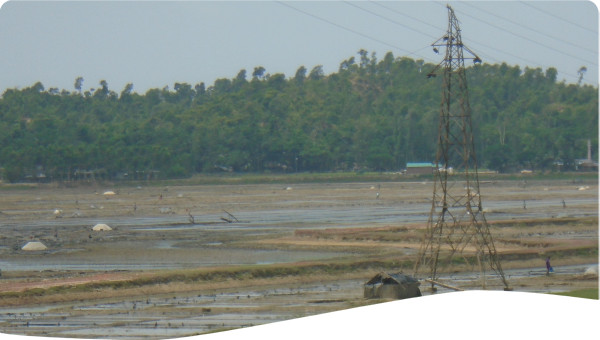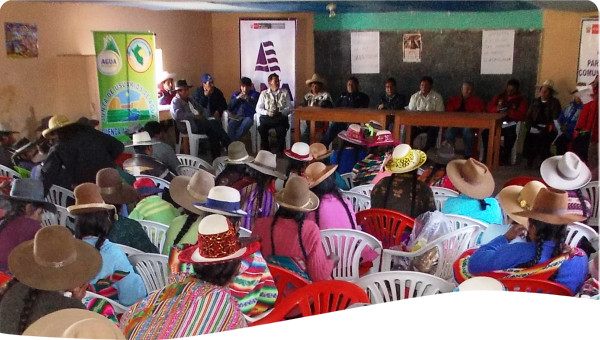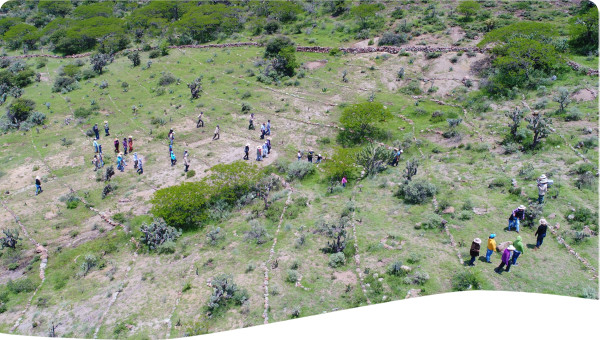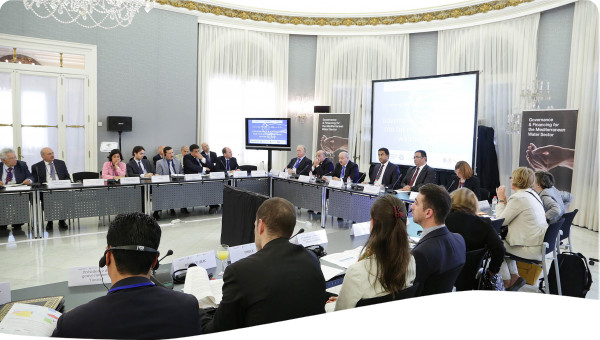Due to increased agricultural irrigation, large-scale dam projects, and inappropriate land and water management practices, the water inflow to the Komadugu Yobe Basin has dramatically been reduced. Action has been taken to establish a legal and policy enabling environment, and to increase knowledge among the local communities to establish more sustainable behaviour. The main lesson learnt was that although a multi-stakeholder participatory approach is slow, it helped to mobilise partnership.
The Komadugu Yobe Basin (KYB) covers a total area of 148,000 km2 divided between north-east Nigeria and south-east Niger with 95% of the basin’s water in Nigeria. The basin is drained by two main river sub-systems: the Komadugu Yobe and the Komadugu Gana, with the Yobe River flowing into Lake Chad. KYB is a sub-catchment of the larger Lake Chad Basin, representing approximately 35% of the Lake Chad Basin, which is shared by six Nigerian states and four other countries (Cameroon, Central African Republic, Chad and Niger).
The water flow in the Komadugu Yobe has fallen by 35%, due to the combined effects of the two large dams built in the 1970s and abstraction of water for large-scale irrigation systems. The Komadugu Gana tributary, for instance no longer reaches the Yobe River, which in turn only contributes about 1-2% of the total water inflow to Lake Chad. Yet the contribution used to be about 10% two decades ago, and due to such external changes, Lake Chad has shrunk dramatically over the last 40 years.
In addition, inappropriate land and water management practices in the basin have changed the seasonal flow to a perennial flow regime. This has resulted in the invasion of reeds and weeds such as Typha in some of the river reaches. These block streams and flooding of channels causing changes in the wetland ecosystems that communities have historically relied upon to deliver regular water services.
With the exception of the year 2001, natural flooding of the Yobe River floodplains has been very limited in recent years and irregular and low flows in the Yobe River have affected the small and large scale irrigation schemes along the rivers with many of them now abandoned. Fishing, farming and herding livelihoods have been adversely affected and the scarcity of water has led to conflict over the available resources.
The basin has also suffered from fragmented regulation and conflicting responsibilities among institutions, a lack of coordination for hydro agricultural developments, inequitable access to water resources, non-optimal utilization of multipurpose dams, and growing tensions and risk of conflicts among water users.
In other words, the river basin seemed locked in a state of institutional paralysis from which a coordinated response to the issues could not be mounted.
As a response to this situation, WANI and partners initiated a process of coordination and participation of all stakeholders in dialogue to reverse the trends in natural resources degradation in the basin through integrated management. Working with the Federal Ministry of Water Affairs and the Nigeria Conservation Foundation, WANI led development of a comprehensive knowledge base for the basin so that water management decisions could be made on the basis of up-to-date information. The next step was to establish a legal and policy enabling environment through which basin-wide coordination mechanisms could be implemented. This led to development of a basin-wide Water Charter which government and civil society agreed on. The development of the Water Charter was a participatory process involving stakeholders from each of the riparian States. The Water Charter was finalized and adopted at the basin-wide stakeholder platform in 2007 where representatives attended from all the six riparian States in Nigeria, the Federal Government Ministries, as well as NGOs and many others. To date, only Borno State has officially signed the Water Charter as ratification by the states has proved to be a slow and involved process due to political changes. In conjunction with these measures, field interventions to pilot-test improved water management that have positive impacts on local livelihoods were implemented. The interventions should improve the flow of the river by removing weeds and silt blockages, resolve conflict, and strengthen livelihoods. The aim was to demonstrate efficient and sustainable water utilization techniques and approaches. These would support the development of a catchment management plan that form the structure and mechanism to implement an integrated and basin-wide water resources management initiative.
Highlights:
- A Water Charter adopted spelling out the agreed principles for sustainable development of the basin and the roles and responsibilities of governments and stakeholders. Borno State is the first to sign.
- The Catchment Management Plan (CMP) created to restore ecosystem services and sustain livelihoods and enterprise development needed to reduce poverty.
- Comprehensive Water Audit completed which provided essential knowledge of the basin for the conception of the CMP.
- Establishment of the Hadejia-Jama’are-Komadugu-Yobe Basin Trust Fund to finance implementation of the CMP and basin restoration.
- Establishment of new institutions for implementing IWRM basin-wide and nation-wide: State Integrated Water Resources Management Coalitions (SIWRMCs) for the Komadugu Yobe Basin states and the Nigeria Integrated Water Resources Management Commission (NIWRMC).
- Pilot interventions to improve the flow of the river by removing weeds and silt blockages, resolve conflict and strengthen livelihoods.
Despite the fact that the multi-stakeholder participatory approach was slow, expensive and time-consuming, it helped mobilise partnership and confidence with Ministries and Government Agencies, decentralized Local Government Authorities (LGAs), NGOs and CBOs, and also improved communication between stakeholders at all levels. There was limited communication between the research institutions and public policy-managers and therefore work was needed to improve the exchange of information and capacity-building. Public participation has generated tangible benefits, fostering cooperation in the process of developing and implementing strategic actions.
Stakeholder collaboration has resulted in a Catchment Management Plan, a Water Charter, new institutions, and the empowerment of stakeholders to participate in planning and management of water resources to provide the necessary capacity to respond to stresses and shocks. The reform of water governance is enabling the transparent coordination of water resources development, including remediation of degraded ecosystems and, eventually, restoration of the river flow patterns. Dialogue has reduced the number of cases of conflict and governments have pledged millions of dollars in new investment for basin restoration through the Hadejia-Jama’are-Komadugu-Yobe Basin Trust Fund. With the changes underway in the basin, governments and communities are acquiring capacities to both learn and cope with uncertain future events.
All these actions have contributed to achieving equity of allocation, efficiency of use and overall sustainable development in the basin.
Regular consultation and transboundary exchange of information on activities is crucial for successful sustainable ecosystem management at basin-level in the KYB, which flows through six Nigerian states. Transboundary cooperation is a key in achieving proper water resources management.
Regular consultation and transboundary exchange of information on activities is crucial for successful sustainable ecosystem management at basin-level in the KYB, which flows through six Nigerian states. Transboundary cooperation is a key in achieving proper water resources management.
Despite the fact that the multi-stakeholder participatory approach was slow, expensive and time-consuming, it helped mobilize partnership and confidence with Ministries and Government.
There was limited communication between the research institutions and public policy-managers. Therefore, work was needed to improve the exchange of information and capacity-building. Public participation has generated tangible benefits, fostering cooperation in the process of developing and implementing strategic actions.
 Case studies
Case studies




